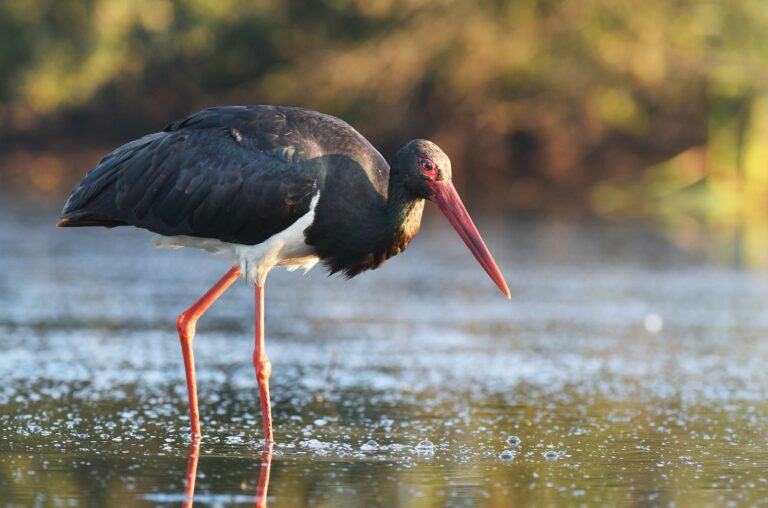Ciconia nigra

The black stork has red-colored legs and bill. The plumage on the upper side of its body is predominantly black, with some greenish-violet iridescence, while the underside is white (Schaefer 2018). It weighs approximately 3 kg, grows up to 96 cm tall, and has a wingspan of 185-205 cm, making it slightly smaller than the white stork. Ciconia nigra prefers to inhabit forests with standing and flowing waters, which provide suitable breeding sites and sufficient food resources (Jiguet and Villarubias 2004). The breeding season typically begins in mid-April and lasts for an average of 34-38 days. As a long-distance migratory bird, the black stork migrates to Africa to spend the winter months. Threats to individuals of this species include disturbances at breeding sites, excessive forest exploitation, and collisions with power line pylons and wind turbines. Nest predation by martens or raccoons, like with other bird species, can also pose a threat (Helbig 2011).
Diet: The black stork feeds on insects, frogs, fish, and smaller mammals (Schaefer 2018).
Conservation status: The black stork is classified as “Least Concern” in the IUCN Red List of Threatened Species.
Exemplary Sources
-
Helbig, Dirk (2011)Untersuchungen zum Waschbären (Procyon lotor Linné, 1758) im Raum Bernburg. In: Naturschutz im Land Sachsenanhalt 48 (1 + 2), S. 3–19.
-
Jiguet, F; Villarubias, S (2004)Satellite tracking of breeding black storks Ciconia nigra: new incomes for spatial conservation issues. In: Biological Conservation 120 (2), S. 153–160.
-
Schaefer, M (2018)Brohmer – Fauna von Deutschland. Ein Bestimmungsbuch unserer heimischen Tierwelt: Quelle & Meyer Verlag GmbH & Co.